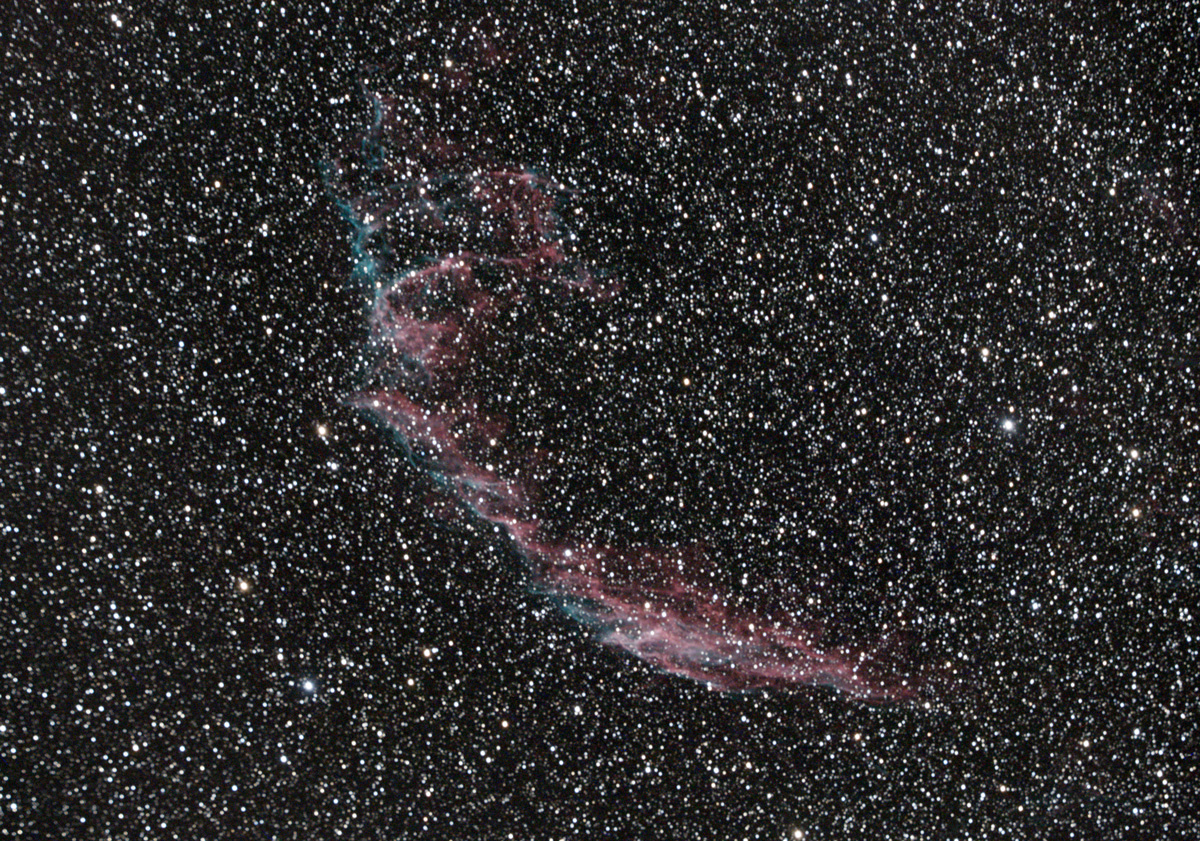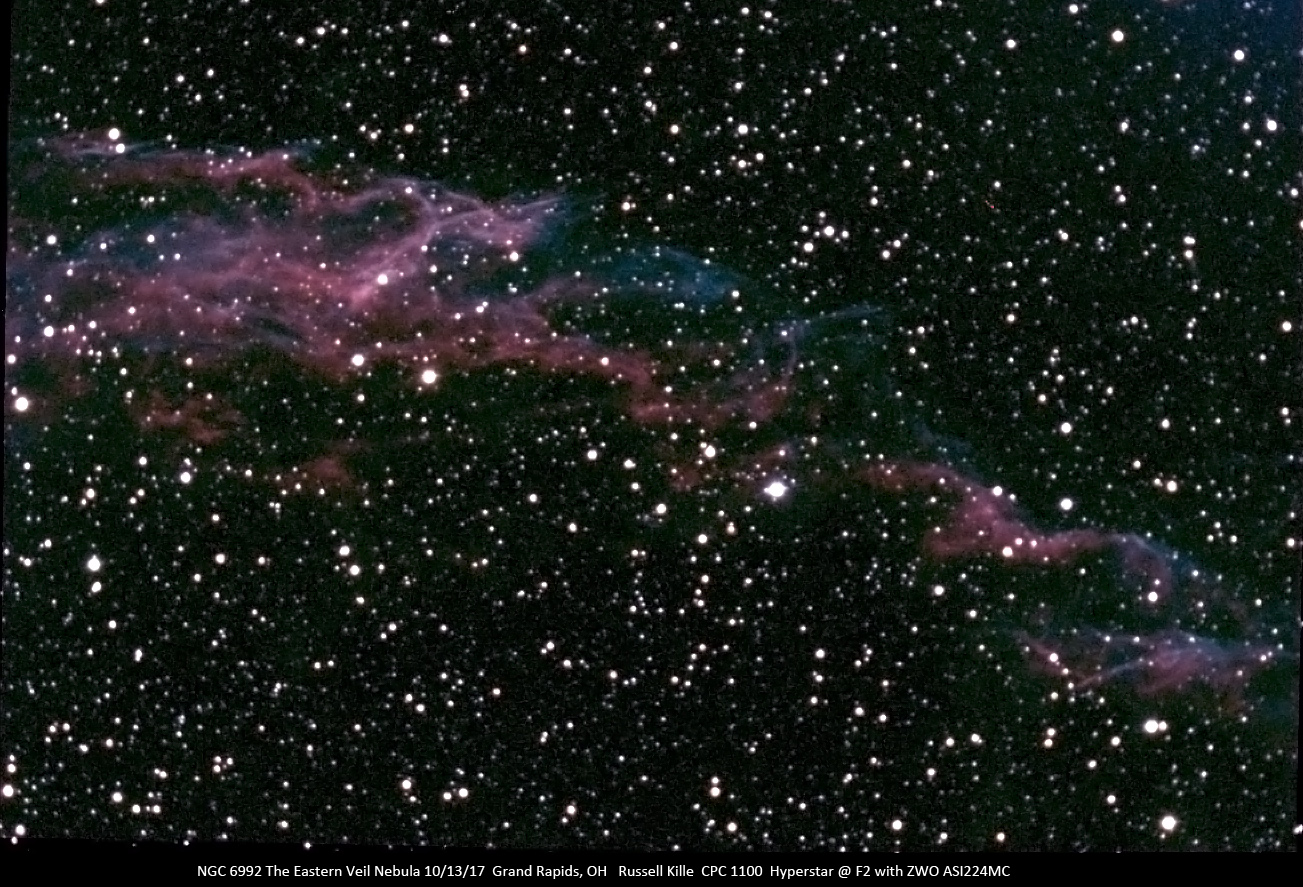
The Veil Nebula
Magnitude: 7.0
Distance: Aprox: 1,470 light-years
Constellation: Cygnus
Diameter: 100 light years or 3 degrees
The Veil nebula is a frequent object of study for astronomers because it is large, located relatively close to Earth, and makes a good example of a middle-aged supernova remnant. Different regions of the Veil Nebula have different nicknames. The Western Veil Nebula is also known as the Witch’s Broom, while the Eastern Veil is sometimes called the Network Nebula. It stretches over a large area and its surface brightness is pretty low, which makes it difficult to see without an OIII filter. The filter isolates the wavelength of light from doubly ionized oxygen, allowing astronomers to see the nebula using any telescope.
The wispy, intertwined structure of the nebula is a result of vast amounts of energy released as the debris from the supernova explosion moves at high speeds through the area, creating shock fronts. The debris moves at about 600,000 kilometres per hour and heats the surrounding gas to millions of degrees. As the material cools, it creates the coloured glows.
NGC 6992 Eastern Veil Nebula aka.. ("Network nebula")
Magnitude: 7.0
Distance: Aprox: 1,470 light-years
Constellation: Cygnus
Diameter: 100 light years or 3 degrees
Taken 9/8/18 in Agawna Bay Lake Superior Provential Park, Canada by Russell Kille on a CPC 1100 with Hyperstar @ F2 and ZWO ASI294MC Pro camera

NGC 6960 Western Veil Nebula aka...("Witch's Broom", "Finger of God", Lacework Nebula, "Filamentary Nebula")
The Western Veil Nebula, is the easiest component to find as it lies behind the star 52 Cygni, which is bright enough to be seen without binoculars.
Taken 8/3/19 at Hudson Lake Michigan by Russell Kille on a Celestron 14" Edge HD with Hyperstar @ F1.9 and ZWO ASI294MC Pro camera
Taken 9/8/18 in Agawna Bay Lake Superior Provential Park, Canada by Russell Kille on a CPC 1100 with Hyperstar @ F2 and ZWO ASI294MC Pro camera